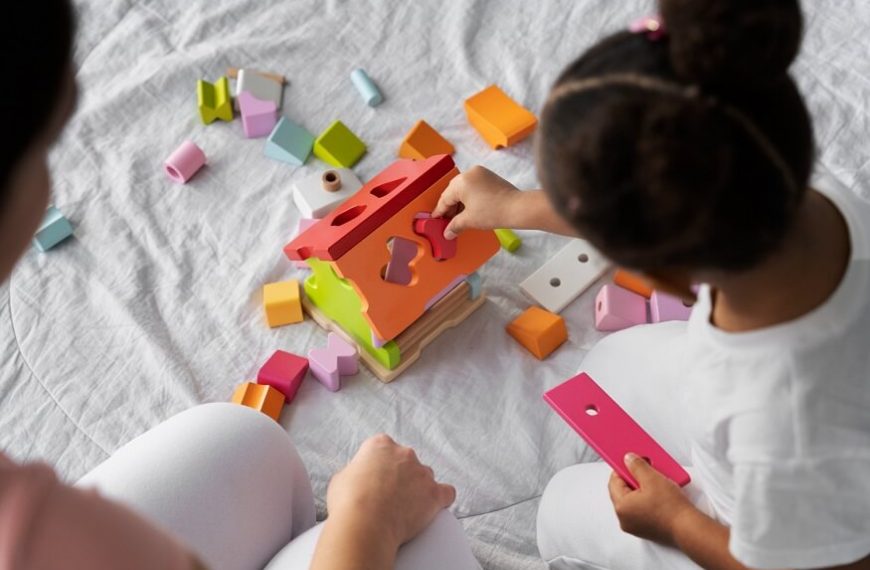Fostering a passion for learning in a child is crucial during the early years of their schooling. Spelling their own names is a fun method to get youngsters interested in educational activities. The act of writing their names fosters a sense of identification and personal ownership in addition to phonemic knowledge. In this blog, we will look at a number of engaging activities that may teach children how to spell their names correctly. Parents and teachers may help these young brains enjoy studying by including spelling exercises in their regular schedules. Let us explore spelling and see its benefits for young children.
Name Activities For Preschool
Children should work on preschool name activities at the start of the school year. These name activities include getting your hands dirty and practising spelling their name. Instead of presenting kids with isolated letters, it also aids in the learning of letters by youngsters in context. These name exercises are suitable for both teacher-assisted sessions and independent practice. Use them when you arrive (for morning work), in a small group, or at a literacy centre. Offer a name card for kids to look at as they first learn how to spell their names. You may remove the name cards later when you need them to memorise how to spell their names.
Letter Tiles In A Cup
Put the letter tiles for the name of each child in a cup. The punch cups are affordable disposables. Personalise the mug with their name using an address label or masking tape. The letters will be poured out of the cups and arranged in the proper sequence to spell the child’s name. For storage, the cups may be stacked. Other letter manipulatives, such as letter beads or magnet letters, can be used in a cup.
Kinetic Sand Name Activity
Spread kinetic sand evenly around the surface of a tray. This dish could easily fit a two-pound satchel of kinetic sand. Use alphabet cookie cutters to help kids push the alphabets of their names into the kinetic sand. To embellish the alphabet of their name, you may also use things like little seashells, tiny stones, or plastic gems.
Wooden Block Names
Write the first letter of each child’s name on dot stickers that you may get from any office supply store. Wooden cubes should be covered with stickers. Encourage kids to arrange the wooden cubes to spell out their names. These labels can be taken off and reused for the following batch of kids the next year.
Sticker Names
Children should place dot stickers on sheets in the correct order after writing the letters of their names on the stickers.
Clothespins on a Stick Name Activity
One letter from each child’s name should be written on a clothespin for this exercise. Children should be instructed to arrange their name’s letters on a paint stick made of wood or a particularly long craft stick before clipping them to the stick. Additionally, this is a fantastic fine motor practice. Ten of these paint sticks are available in a pack at a hardware shop. Children may either have the alphabets on the paint stick so they can match them, or you can leave the letters off so they have to remember how to spell their name.
Letter Bead Name Activity
Instruct kids to arrange the letters in the correct sequence using beads strung on a thread or a pipe cleaner. Either bigger letter beads or little craft beads bought from a craft store would work. Stackable cups might potentially be used to store them.
Linking Cube Names
If you have extra connecting cubes, you can use a permanent marker to draw letters on them and have kids connect them to form their names. (If you just want to make use of them for one lesson, you may also write on them using a dry-erase pen.)
Magnet Letter Name Spelling
Kids may use magnet letters to spell their names on a magnetic board.
Name Recognition and Letter Introduction Activities
- Sensory Letter Tracing: Start by teaching the child’s name’s letters using various textures, such as foam, sand, or salt. Please encourage them to make the proper sounds while tracing the letters with their fingers. The relationship between letters and their sounds is strengthened by this multisensory experience, which also helps with letter identification.
- Letter Hunt: Make a scavenger hunt where kids must find their names in giant cutout letters concealed all over the room. As they locate each letter, assist them in placing them in the proper order to spell their name. Both letter recognition and fine motor abilities are encouraged by this game.
- Rainbow Writing: Children should be given crayons or coloured markers and instructed to write their names repeatedly on a sheet of paper. Please encourage them to trace their name many times using a different colour each time. This exercise improves letter formation, strengthens letter order, and infuses the learning process with a little bit of creativity.
Spelling Activities for Preschoolers
- Name Puzzles: Make name puzzles by putting a different puzzle piece with each letter of the child’s name on it. Ask them to assemble the pieces of their name to form their name. This practical exercise improves problem-solving abilities, spatial awareness, and letter identification.
- Name in the Sky: Ask kids to spell their names out letter by letter while holding a torch up to the wall. Along with enhancing letter recognition, this practice also injects some creativity and playfulness.
- Playdough Names: Playdough may be rolled out and shaped into the letters of a child’s name. This tactile activity stimulates their senses and improves their ability to form letters.
Expanding Spelling Skills through Games
- Spelling Bee: Set up a fun spelling competition in which kids take turns spelling their own names out loud. Children are encouraged by this game to pay close attention, recognise the sounds in their names, and pronounce the appropriate letters. Parents or teachers can change the challenge level depending on the child’s ability.
- Letter Sorting: Children should sort a set of letter cards into piles based on whether the letters are found in their names or not. This game encourages language development, critical thinking, and letter identification.
- Name Memory Game: Use index cards to make a memory game by writing each letter of the child’s name twice on different cards. Encourage the youngster to turn over two cards at a time as they strive to match the letters to spell their name correctly by placing the cards face down. This exercise strengthens letter identification and recall abilities.
The Power of Spelling for Preschoolers
Preschoolers who participate in spelling exercises develop their reading abilities as well as a sense of pride and self-assurance. Children connect to written language and learn that words have significance by learning how to spell their names. These exercises encourage the development of letter formation, fine motor skills, and cognitive abilities. Playing spelling games also encourages turn-taking, communication, and social connection.
A preschooler’s learning path may be made more interesting and enjoyable by including spelling exercises. We can inspire a love of learning and lay the foundation for their future academic success by making the process engaging, interactive, and personalised to their interests. Children improve their spelling abilities as well as their sense of their own identities through name-based spelling games. In order to encourage these young brains to become confident and eager learners, let’s embrace the power of spelling.














